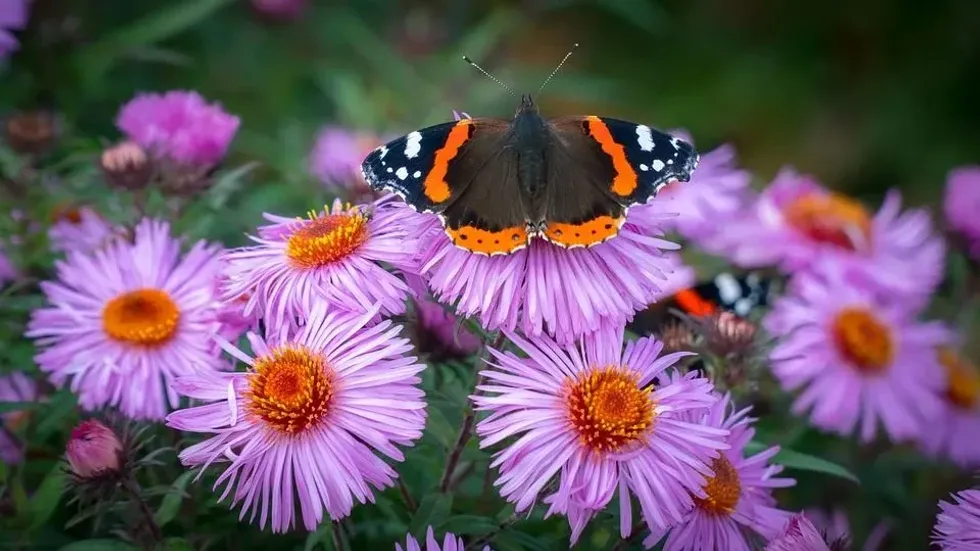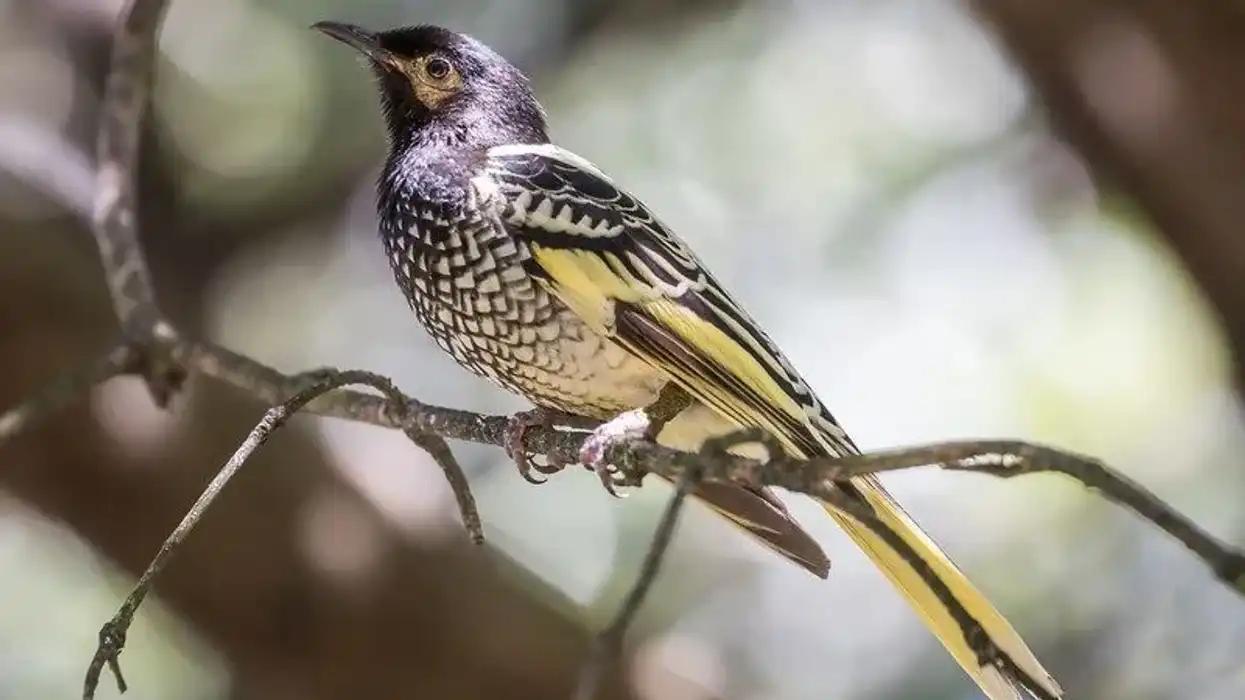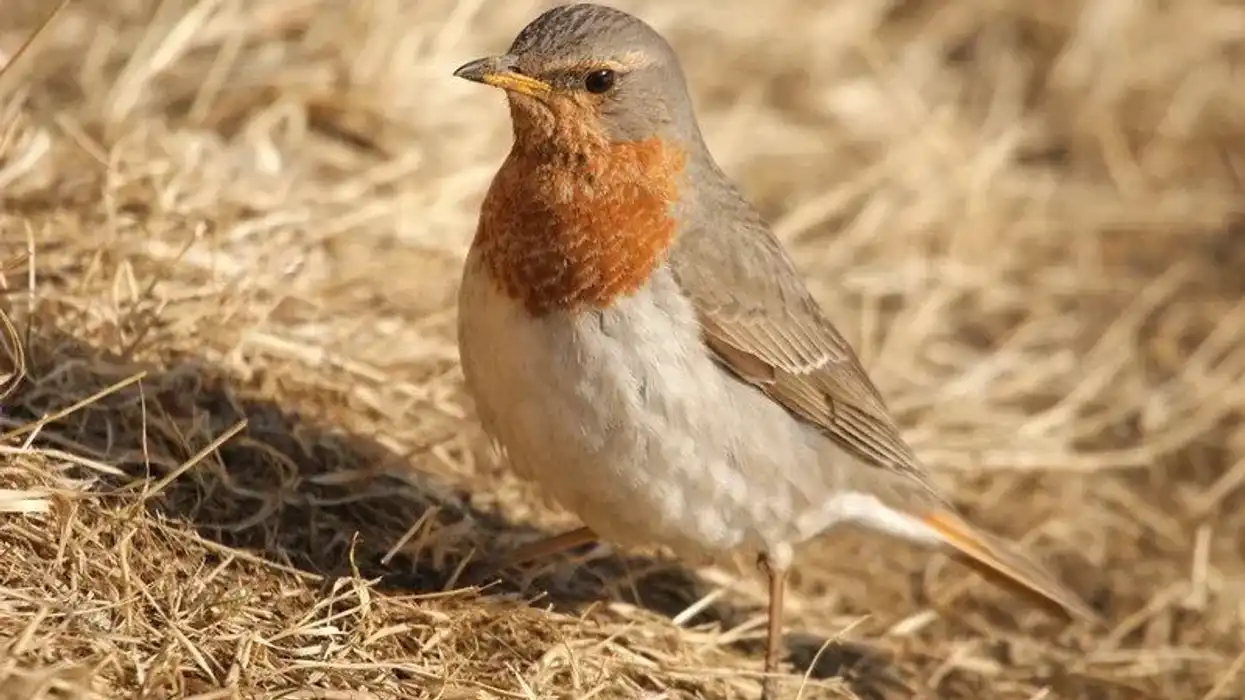The red admiral (Vanessa atalanta) is a medium-sized butterfly species with black wings, white spots, and red-orange bands. These butterflies are common in North America, North Africa, Asia, and Europe. They are often found near beautiful and attractive flowers as they feed on their nectar.
Red admirals find host plants where they build nests and lay their eggs. The preferred red admiral butterfly host plant is a stinging nettle. They feel safe on these plants and their young also feed on them after birth. These medium-sized butterflies also love moist environments and their conservation status is currently Least Concern.
Here on our page, we have lots of amazing facts about the red admiral butterfly that everyone will enjoy. Let's look at these interesting facts. If you like these, then do read our monarch butterfly and Morpho butterfly facts too.
Red Admiral Butterfly Interesting Facts
What type of animal is a red admiral butterfly?
The red admiral (Vanessa atalanta) is a butterfly species. Other butterfly species tend to have black bands, but red admirals have black wings and red and white bands and spots on their bodies. They look very distinct.
What class of animal does a red admiral butterfly belong to?
Red admirals belong to the class of Insecta. These beautiful butterflies truly stand out.
How many red admiral butterflies are there in the world?
The exact population of red admirals is unknown. However, these butterflies are widespread in many countries, and their population is also increasing with time. Apart from the famous red admirals, there are more sub-species of admirals, such as the white admiral and Weidemeyer's admiral.
Where does a red admiral butterfly live?
The red admiral (Vanessa atalanta) is a medium-sized butterfly species who, like other butterflies, is found near attractive, sweet, and beautiful flowers. The range that they are found in includes North America, Asia, Europe, and North Africa.
What is a red admiral butterfly's habitat?
The typical red admiral habitat will include bright and attractive flowers that can provide nectar. Red admiral butterflies are found in gardens, fields, and woods and the red admiral has a specific host plant: the stinging nettle. Here, in these host plants, they lay eggs, and once they hatch, the larvae feed on the host plant.
Who do red admiral butterflies live with?
Red admirals prefer to live in groups as this tends to help them to escape any dangers, including predators. The group also helps them to stay alert. They spend time alone only when in search of food in the form of nectar from plants.
How long does a red admiral butterfly live?
The red admiral life cycle is around 10-11 months long. Within this, they go through many stages. They start as eggs, then they hatch and become larvae, which grow into a red admiral butterfly caterpillar, then they turn into a chrysalis (also called pupa), and then finally mature and become an adult red admiral butterfly.
How do they reproduce?
Only the female red-spotted admiral butterfly has the right to choose her mate., males do not get this privilege. In the mating process, adult males court females for a few hours, and then the mating process starts once the female has picked her male.
After the process is finished, females build their nests on a nettle plant. Because the nettle stings when touched, it becomes a secure and safe place for the eggs to be kept.
What is their conservation status?
The red admiral (Vanessa atalanta) is not considered endangered, in fact, they are classified as Least Concern. However, they are under the threat of declining numbers due to climate change, pesticides, and habitat loss.
Red Admiral Butterfly Fun Facts
What do red admiral butterflies look like?
The red admiral (Vanessa atalanta) is a medium-sized butterfly species with black wings, white spots, and red bands, which sometimes look orange from afar. When the butterfly is old enough, its red color changes to orange.
How cute are they?
The red admiral butterfly is a very beautiful and attractive butterfly!
How do they communicate?
The red admiral butterfly communicates by emitting chemical cues known as pheromones. They also produce noises with their wings while fluttering. These sounds come in different pitches and help them to communicate.
How big is a red admiral butterfly?
The average size of a red admiral butterfly is 1.75 in (4.4 cm) long and 1.5 in (4 cm) in width. These species of butterflies are 10 times smaller than the common cat.
How fast can red admiral butterflies fly?
The estimated speed at which a red admiral butterfly can fly is 5.5-12.4 mph (9-20 kph). Their speed can vary depending on the speed of the wind because they are lightweight and cannot resist the wind very well.
How much does a red admiral butterfly weigh?
The red admiral butterfly is very lightweight due to its small size. Its average weight is around 0.01 oz (0.3 g).
What are their male and female names of the species?
There are no different names for adult male and adult female red admiral butterflies.
What would you call a baby red admiral butterfly?
Young red admiral butterfly creatures are often called 'red admiral instars' or 'caterpillars' (during their second stage of development. They are known as a 'chrysalis' or 'pupae' in the final stage before becoming the adult butterfly.
What do they eat?
The red admiral butterfly feeds on the nectar of bright and attractive flowers and rotting fruits during fall. In the caterpillar stage, this young butterfly also feeds on stinging nettle leaves.
Are they dangerous?
Although the appearance of the matured red admiral butterfly can be a little intimidating because of its fierce red color, this species of butterflies is not dangerous to humans.
Would they make a good pet?
Red admiral caterpillars can be a good pet for a short period of time, however, a full-grown butterfly cannot be a good pet as they need open space for flying and they must be able to find fresh nectar from plants of a specific kind that humans cannot provide them with.
Did you know...
The red admiral butterfly goes through different colors in its different life stages. The color of its egg is green, but its color changes to black, with long and spiky hair, when it is in the caterpillar stage.
In the next stage, the color of the pupa is brown (like a dull and dead leaf), and finally, in the last stage, it turns into black color with red-orange bands and small white spots. How beautiful?
The symbolism of the red admiral butterfly
Many people believe that the red admiral butterfly symbolizes souls and spirits. These butterflies also signify resurrection and transformation to many. Some people believe that if you see a red butterfly entering your home, it means happiness is coming into your life.
What are red admiral butterflies attracted to?
Apart from the nectar of flowers, red admiral butterflies are attracted to fruits like grapes, strawberries, apples, oranges, and other juicy fruits.
Here at Kidadl, we have carefully created lots of interesting family-friendly animal facts for everyone to discover! Learn more about some other insects, including the black witch moth, or the cockle.
You can even occupy yourself at home by drawing one on our red admiral butterfly coloring pages.










